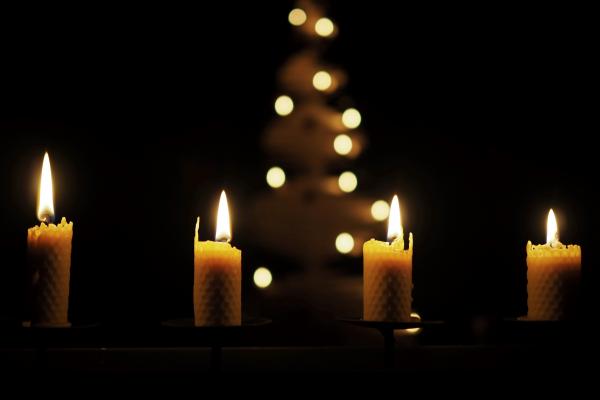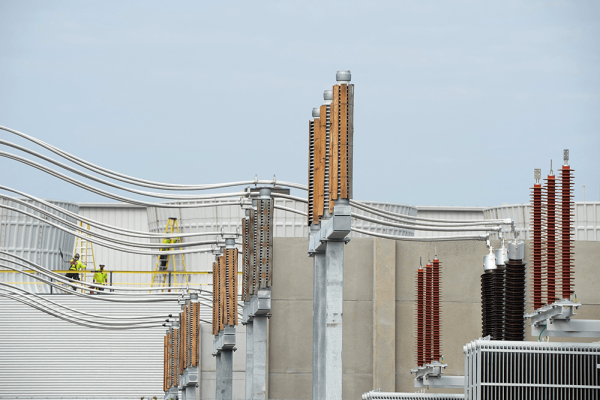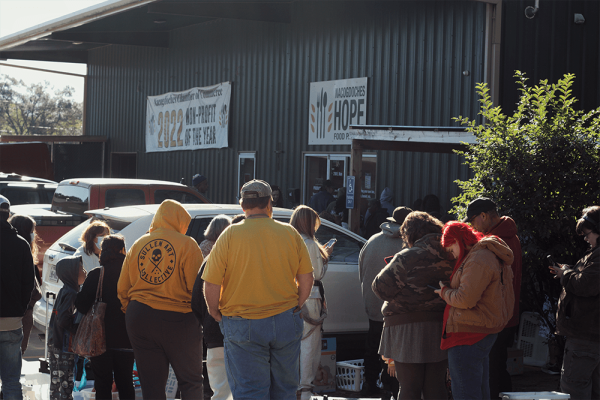Weeks before Christmas, the Advent wreath is fully lit at the front of the church. Each white pillar candle burns brightly as the Advent procession begins. A moment later, a woman extinguishes one of the flickering flames with a long, official-looking candle snuffer. Hmm, this is not how it’s supposed to go, I ponder silently. Having grown up in nondenominational evangelical churches, I’m still getting used to these liturgical moments, but even so, I’ve been a Christian long enough to know that the Advent wreath traditionally starts unlit. Then, each Sunday during the season of Advent leading up to Christmas, the candles are successively illuminated. Clearly, we are doing things differently this year.
The dimming of the Advent wreath sets the stage for Advent reimagined — the beauty of darkness revealed; the mystery of darkness embraced. My appreciation for this nontraditional approach grows as I realize the extent to which the “darkness” metaphor has been used with solely negative connotations — especially by the church. Barbara Brown Taylor points out, “Christianity has never had anything nice to say about darkness.” Rather, she continues, “darkness [is used] as a synonym for sin, ignorance, spiritual blindness and death.”
Yet it is often darkness that facilitates the most magical of moments.
The dimming of the Advent wreath also reminded me of civil rights activist Valarie Kaur’s poignant question: “What if this darkness is not the darkness of the tomb, but the darkness of the womb?” “Remember the wisdom of the midwife: ‘Breathe,’” she says.
“Breathe,” my therapist echoed on Friday as my tears flowed freely. Despite my usual defenses, something clicked in the moment and I confessed, “I feel terrible!” I’d been feeling terrible in that carrying-the-weight-of-the-world sense and had begun internalizing many of the never-ending layers of the world is not as it should be, especially while working in the medial field and carrying the weight and responsibility of patients on my shoulders. I want to be a healer. I want to do my part to make the world a little bit more as it should be. Despite our best efforts, still the world is not as it should be. Before long, the heaviness of this seeped inside me.
Since it doesn’t take much to start feeling completely overwhelmed and disillusioned again, I keep returning to a question a friend of mine once posed: “Which corner of the garden is mine to tend?” We each have a role to play, and all we can do is our part. We are each tending our own corners of the garden.
Krista Tippett writes about the Jewish concept of Tikkun Olam, sharing insights she gained from her interview with Dr. Rachel Naomi Remen. The phrase literally means, “repair of the world,” and it is both an invitation and an expectation; it is both a personal responsibility and a collective act to participate in the healing of the world. Tippett adds, “each one of us, flawed and inadequate as we may feel, has exactly what’s needed to help repair the part of the world that we can see and touch.”
In the darkness of the womb, the future is waiting to be born. And yes, sometimes we’ll feel terrible, but this Advent, may we have ears to hear the midwife as she compassionately reminds us to breathe.
Got something to say about what you're reading? We value your feedback!






